Top 10 Activities To Do in Jeju Island
04 Sep 2019
Jeju Island, known as “South Korea’s honeymoon capital” and the “Island of the Gods”, is a popular destination for both locals and international travellers. A mere hour and a half from Seoul, Jeju Island is a paradise for nature lovers. Soft sand beaches, dramatic seaside resorts and numerous UNESCO World Heritage Sites dot its landscape, with the volcanic Mount Hallasan commanding its epicenter.
If you are considering a trip to Korea, why not save a couple days for Jeju Island? Due to its mild coastal climate, Jeju Island is great for visiting any time in the year. Even the off-peak winter months, which tend to last between December to March, are not unduly cold although you will get some strong winds!
On that note, here are the top 10 activities to do in Jeju Island.
Hiking at Mount Hallasan
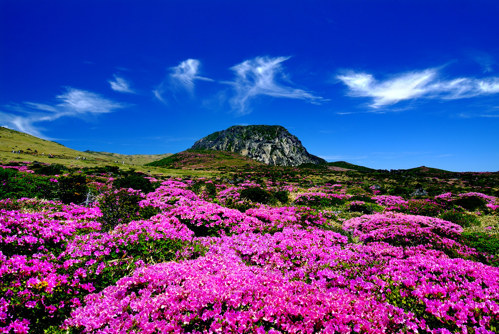
Image by Korea.net
At 1,950 meters above sea level, Mount Hallasan is the highest mountain in Korea and a UNESCO World Heritage Site.
There are 6 trails to choose from. The shortest route is the Yeongsil Trail, which is 7.4km (return), takes around 2 hours and is perfect for beginners. Alternatively, you can try the 17.4 km Gwaneumsa Trail which will take you around 8 to 10 hours to complete but has some of the very best views!
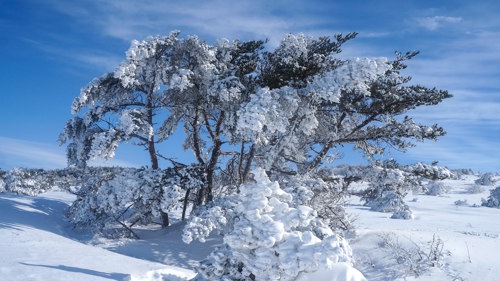
Image by Ji Seong Kwang
The views you will get from these hikes vary depending on the season. Summer is full of lush trees albeit with the annoying onset of flies at the top of the crater lake. Winter has its own wonderland charm.
Top tip: If you want to do a picnic, don’t do it at the crater lake during the summer. It has stunning views but there is a horrible swarm of flies in the area. Our advice would be to reach the crater lake then make your way down to find a cooler and less-infested spot.
Explore Manjanggul Cave
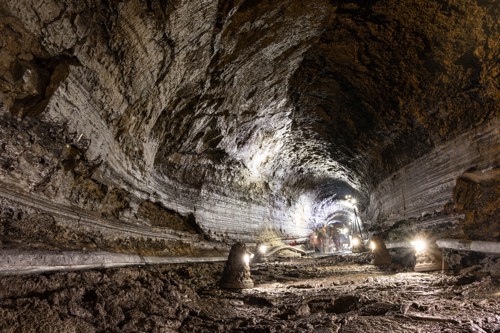
Image by Deon Hua
Manjanggul Cave is another UNESCO World Heritage Site that you want to have on your bucket list. It is one of the world’s longest cave tunnels at 13 km, although only 1 km is open to tourists. Spend around an hour here exploring the various well-maintained geological structures and don’t forget to keep an eye out for the bats!
Some of the top features to look out for include the largest recorded lava column in the world (at 7.9 meters) and the “Stone Turtle” structure, which resembles the outline of Jeju Island.
Top tip: Bring a jacket even if you are visiting during the summer time. Temperatures within the cave can plunge down to 11°C to 21°C.
Pose on Seonimgyo Bridge
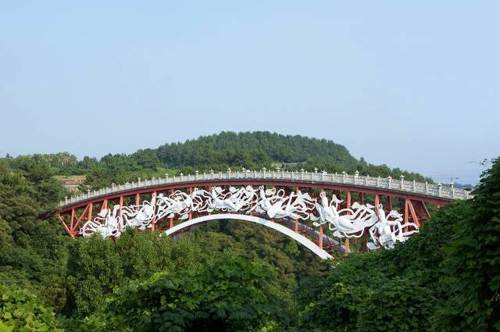
Image by Seoul Korea Tour
Seonimgyo Bridge is one of the most stunning bridges you will find on Jeju Island. Known as the 7 Nymphs Bridge due to the 7 nymphs carved on both sides, these 7 nymphs are rumoured to descend from heaven at night. In fact, the locals celebrate the coming of the nymphs during the Chilseonyeo Festival in May, and you even get to bathe in the falls then! The perfect place for an Instagram shot.
Top tip: Make this a stop on your way to the Cheonjeyeon Waterfall, which can be reached within several minutes by foot.
Discover Cheonjeyeon Waterfall
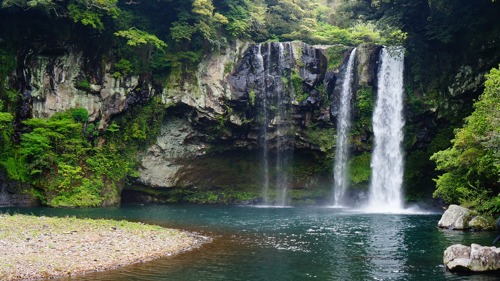
Image by LUISIENA REX from Pixabay
Cheonjeyeon Waterfall is a three-tiered waterfall that is also known as the “Pond of God” because the legends say it that the gods came down to earth to swim and created this heavenly waterfall. Heavenly nymphs and fairies are also rumoured to come down at night for a bath!
Cheongjeyeon Waterfall is distinct because of the way that nature has constructed it. The main waterfall first makes a 22 meter drop into a pond. From that 21 meter deep pond, the cold spring water makes another 30 meter plunge that creates two smaller waterfalls, resulting in a breathtaking sight. There are also plenty of lush vegetation around, including the rare Solipnan reeds and Skeleton fork ferns for nature lovers.
While you aren’t allowed to swim here, Cheonjeyeon Waterfall remains a popular attraction. There will be wooden stairs and a viewing platform to allow you to capture a great photo of this waterfall and tick another item off your bucket list.
Seongsan Ilchulbong

Image by Arrigo Lupori
Known as the “Sunrise Peak”, this 180 meters UNESCO World Heritage Site is great if you are looking to capture the perfect Korean sunrise photo.
Seongsan Ilchulbong is actually an extinct volcano formed out of an eruption some 10,000 years ago. It will take you around an hour to make the climb. Be warned however that it is quite a steep climb but it will be worth it. When you reach the peak, you will encounter a large crater surrounded by 99 sharp rocks, making it look like a giant bowl carved by nature.
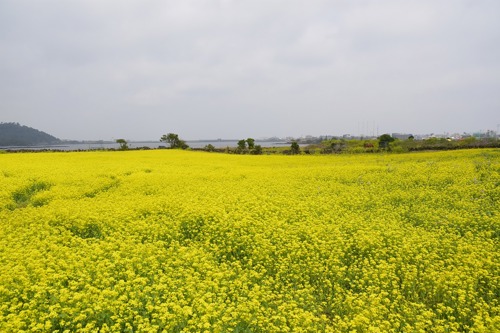
Image by Simon Green from Pixabay
Top tip: If you hike during springtime, the Seongsan Ilchulbong peak will be covered in a carpet of yellow rapeseed flowers. Another Instagram shot!
Haenyeo Women Diver Show, Seongsan Ilchulbong

Image by diveoclock.com
If you are already at Songsan Ilchulbong, make sure you stay for the Haenyeo Women Diver Show.
Haenyeo refers to the female free divers of Jeju island, otherwise known as the Korean mermaids. These mermaids can hold their breath for up to three minutes, to a depth of 30 feet, as they dive for abalone and shellfish to sell at the market. At 1.30pm and 3pm, you can watch the Haenyeo Women Diver Show where the mermaids dive for seafood before it is served on a plate for you to try. Definitely something you can’t find anywhere else!
If you are interested in learning more about this unique dying tradition, you can visit the Haenyeo Museum.
Horse Riding at Ma Park
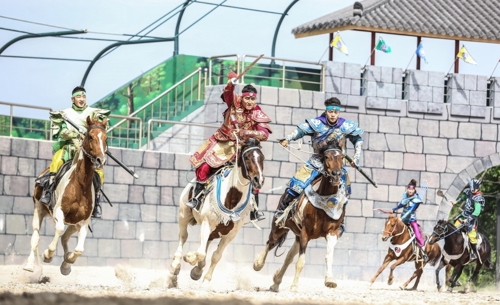
Image by Be Free Tour
Ma Park is the world’s largest horse-themed park and offers everything from horse-riding performances to indoor and outdoor tracks for those seeking to do a little horse riding themselves.
The show, “Oh, Goguryeo! 1,000 years of kingdom” is a four-part act that lasts 50 minutes, and is based on the legend of Jumong, who created the Goguryeo Kingdom. It features around 60 professional Mongolian equestrians. Alternatively Ma Park has short to long distance horse riding courses, a zoo and kart riding experiences and is open all year round.
Iho Tewoo Beach
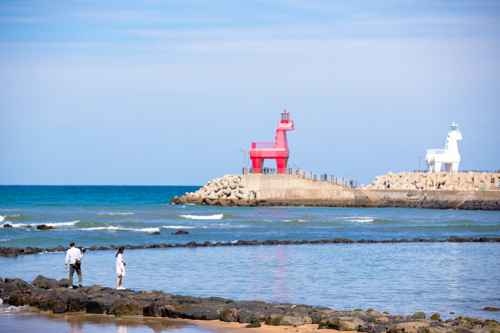
Image by Korea Etour
Iho Tewoo Beach is a lovely beach known for its lighthouses which are shaped in the form of red and white Trojan horses. Located a mere 10 minutes from Jeju International Airport, the Iho Tewoo Beach is a popular festival venue throughout July and August, including the Wondam fishing festival (stone anchovy trap) and Tewoo rowing competition.
There are so many things you can do here - explore the lighthouses, go surfing, anchovy fishing, swimming, or even floating (floats are available for rent). If you get tired, there are lots of nearby seaside restaurants to choose from.
Jungmun Beach
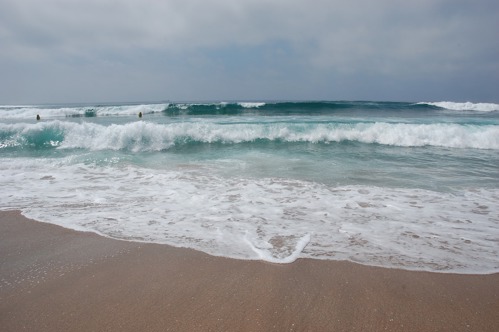
Image by Stephane Tampigny from Pixabay
Jungmun Beach’s massive waves are a favourite among surfing enthusiasts and is the site of the Jeju International Surfing Competition.
Even if you are no surfer, its soft sand beach itself is worthy of visiting. 560 meters long, Jungmun Beach’s white sand beach is often referred to as jinmosal due to the four, distinct colour gradient of sand that can often be found on shore: white, black, red and gray. This sets a unique backdrop against the black Hyeonmuam stones and a nearby natural sea cave that is often used in television commercials.
Top tip: If you have had enough of surfing and building multi-coloured sand castles, remember to explore the nearby Jusangjeolli Cliffs with its imposing hexagonal stone pillars.
Sampling Jeju Island’s Local Delicacies
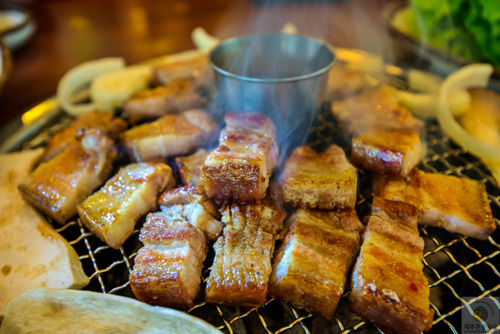
Image by Jeju Tourism Organization
You can’t visit Jeju Island without trying some of its local delicacies!
Of particular note is the heuk-dwaeki, which is black pork made from Jeju’s small black skinned pigs. The barbeque is started by greasing the grill with a cube of pork fat and comes with plenty of side dishes like tofu soup, steamed egg, mushrooms and the all-essential kimchi. While heuk-dwaeki is slightly more expensive than your regular pork, it should definitely be sampled if you are a pork lover in Jeju Island.
If you aren’t a pork lover, there are also plenty of pork-free / halal restaurants around the island. In particular, try the jeonbokjuk (an abalone porridge consisting of innards and rice) and jagalchi (grilled or boiled scabbard fish).
Top tip: If you are looking for some heuk-dwaeki, drop by the Black Pork Street (walking distance from the Dongmun Market). This is a street filled with restaurants serving barbequed black pork so you will be spoiled for choice. If you are seeking halal restaurants, look out for Bagdad Cafe.
Conclusion
If the idea of exploring the wild and glorious landscape of Jeju Island appeals to you, check out the Amazing Seoul page that is running at mayflower.com.my. There are numerous packages on offer that you don’t want to miss out on! Book any of our featured South Korea packages and enjoy an additional 5% discount*, exclusive for online members.
*Terms and conditions apply.
-----------
Iuliya
A faith-driven Sarawakian lawyer who believes that it is never too late to start crafting a socially impactful legacy. When not grappling with warranties and liabilities, she loves pursuing adrenaline-fueled adventures, improving her Español and playing the violin. You can find her at @vidadeliya or https://www.vidadeliya.com

